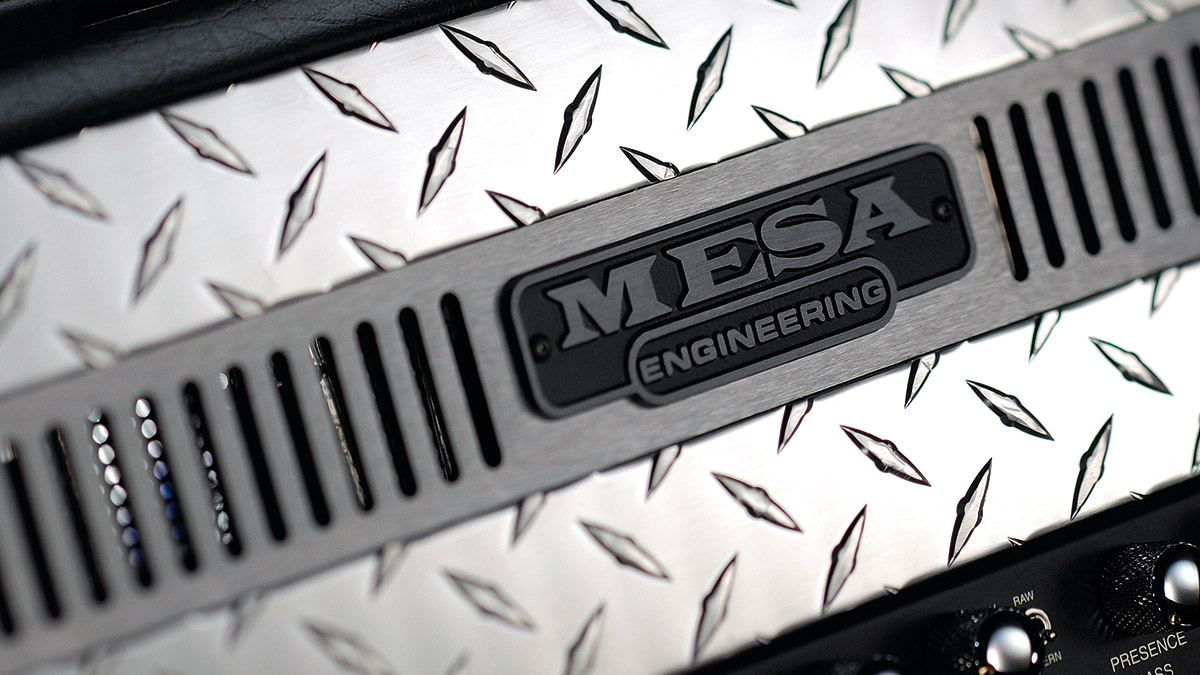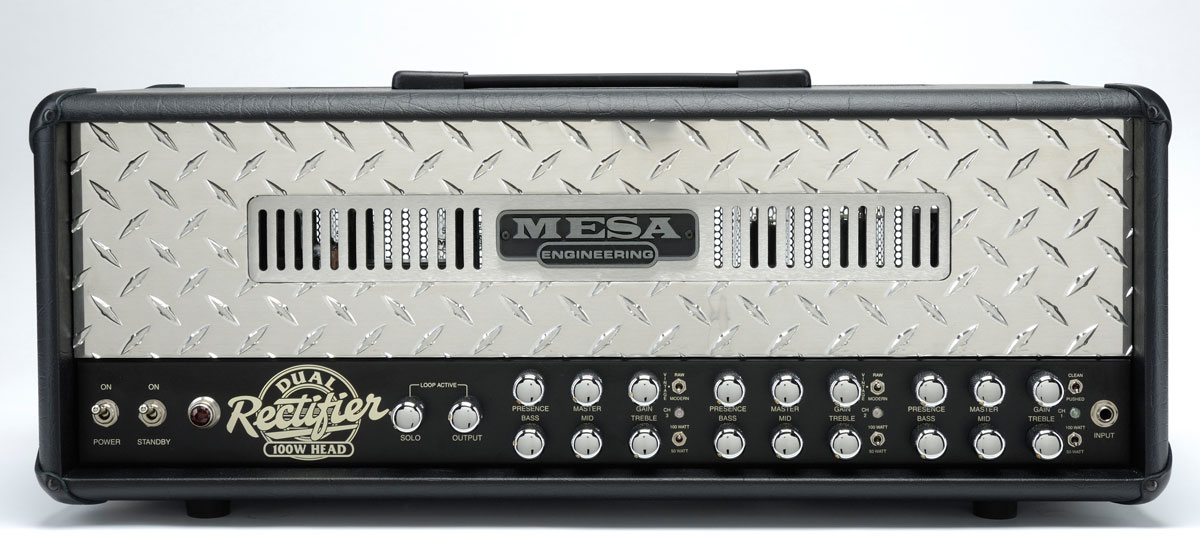
No single product played a bigger role in defining the sound of rock in the Nineties than the Mesa-Boogie Dual Rectifier guitar amp. The great irony of this is that the Dual Rectifier was originally conceived to satisfy the demands of metal and hard rock guitarists during the late Eighties, when the high-gain amplifier wars went into overdrive.
Faced with increasing competition from companies like Soldano and a growing legion of techs who shifted from modifying amps to offering their own boutique models, Mesa started work on the Dual Rectifier in 1989, developing two distinct prototype circuits (Revisions A and B) before settling upon the Revision C circuit and officially introducing the Dual Rectifier in February 1992.
“It took us longer than we wanted to bring the Dual Rectifier to market because we kept working on it,” said Mesa-Boogie R&D Director Doug West. “We were originally shooting for the late-Eighties hair metal crowd, but by the time we finished it, the grunge era began.
“We thought we were too late, but our timing turned out to be pretty good after all. The Rectifier Series became much more popular than we ever dreamed it would be, especially with the dramatic shift in music. From 1993 to 2004 those amps were over half of our business.”

The Dual Rectifier’s name originated from the amp’s use of tube and silicon diode/solid-state power amp rectification to provide a choice of a modern, tight, fast attack (diode) or a smoother, vintage-style attack and sag (tube) via a Rectifier Select switch.
The original Dual Rectifier, produced from 1992 through 2000, was a 100-watt head with two switchable channels and three voices (Clean, Orange/Crunch, Red/Distortion).
Other notable features included a Bias Select switch (for swapping 6L6 and EL34 tubes), Bold/Spongy (Variac) switch and a Channel Cloning switch that makes the two channels closely resemble each other. Initial production models from 1992-94 have a series effects loop, which switched to a parallel effects loop with Revision G in 1994.
There’s not enough space to go into the finer details of Revisions C, D, E, F and G, but numerous online resources are available for those who care to dig deeper.
Dedicated legions of fans support one revision or another, but if you’re interested in an earlier revision it’s best to try it yourself, as one player’s warmth is another’s mud and so on.
The Rev G model’s massive, tight low end, throaty mids and super-saturated gain generally define what is now known as the Dual Rectifier’s signature sound, as it was the version most commonly heard on a wide variety of records during the late Nineties.
The Dual Rectifier’s popularity inspired a family of related products that included the Triple Rectifier (which did not have three rectifiers, but offered 150 watts of output), Single Rectifier, Trem-O-Verb, Rect-O-Verb, and Maverick. In 2000, Mesa shifted to a three-channel version of the Dual Rectifier with vastly improved clean tones, and that variant remains in production today.
A vast majority of Nineties rock bands of various genres used Dual Rectifier amps or Dual Rectifier-family amps. This includes grunge bands like Alice In Chains and Soundgarden, alternative bands like Bush, Everclear, Foo Fighters, Primus, and 311, metal bands like Metallica, Nevermore, Rammstein, and Tool, punk bands like Bad Religion, Blink-182, and Sublime, and nü-metal bands like Incubus, Korn, Limp Bizkit, Linkin Park, and Sepultura.
Suffice to say, if your band plays Nineties covers and you still prefer to use a real amp, you need to have a Dual Rectifier in your rig.
Suggested settings
Nineties Metal Rhythm:
Red channel (2) Master: 4, Presence: 4. Bass: 5, Mid: 3, Treble: 6 Gain: 7 Bold/Spongy switch: Bold Rectifier switch: Silicon Diode (6L6 tubes recommended for tighter, brighter tone)
Modern Blues Rock: Orange channel (1), Master: 4, Presence: 2, Bass: 6, Mid: 6, Treble: 4, Gain: 3.5 Orange Channel Gain switch: Variable High Gain; Rectifier switch: Tube







